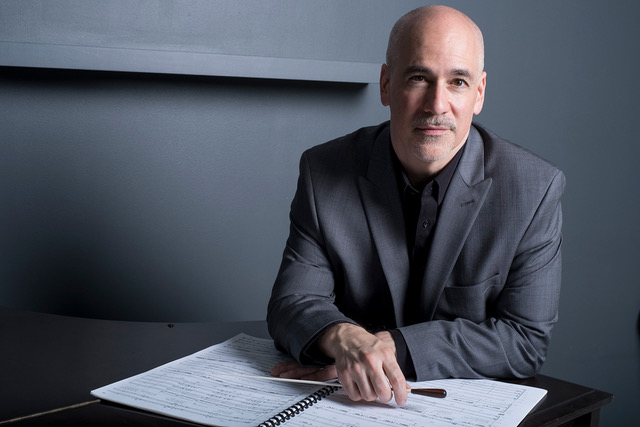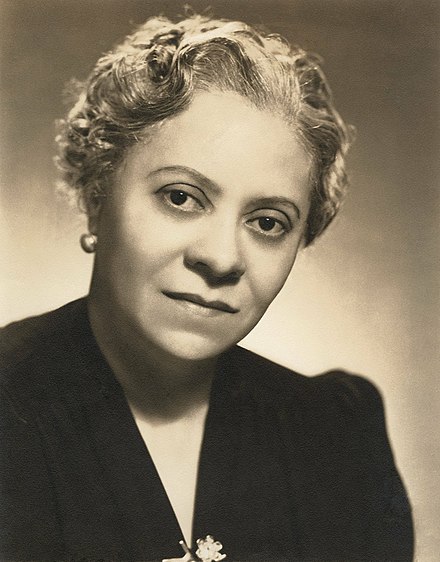Dvořák’s New World Symphony is familiar to many concert goers. Less so is Florence Price’s Third Symphony, which takes the ‘American symphony’ to new heights through its use of African American, modernist, and jazz idioms; and Peter Boyer’s ‘Fanfare for Tomorrow‘. This is an exhilarating chance to hear all three works in a single concert.
The Music
Peter Boyer
Fanfare for Tomorrow (2020/21)
Florence Price
Symphony No.3
Dvořák
Symphony No. 9, From the New World
About The Music
Peter Boyer

Peter Boyer (b. 1970) is an American composer based in southern California. He has been commissioned by leading orchestras on many occasions and his major work Ellis Island: The Dream of America, for actors and orchestra, has become one of the most-performed American orchestral works of the last 15 years, with over 300 performances by more than 100 orchestras since its 2002 premiere. In May 2025, he was co-commissioned to create a new work entitled ‘American Mosaic’ for narrator, orchestra and video to mark ‘American250’, for the 250th anniversary of the American Declaration of Independence in 2026.
The ‘Fanfare for Tomorrow’ began as a piece for solo horn, commissioned by the Cincinnati Symphony Orchestra in 2020 as part of a project to stream new music for solo instruments during the COVID lockdowns. When the 2020 US presidential election was called for Joe Biden, Boyer let it be known he would like to compose a work for the inauguration. He received a commission on 1 January 2021 – with less than a fortnight in which to complete it. The result was an expanded reworking of the earlier horn theme, initially for concert band and later for full orchestra. Peter Boyer has written ‘I was grateful for the opportunity to contribute some optimistic music to an historic occasion, which represented the beginning of a new chapter.’ He was not able to attend the inauguration due to increased security in Washington following the January 6 attack on the capitol, but was able to watch the performance streamed live on television.
Florence Price

Florence Price (1887 – 1953) was the first African-American woman composer to have a work performed by a major orchestra, when the Chicago Symphony Orchestra performed her First Symphony in 1933. Price was born in Arkansas and her education in music began early – her mother was a music teacher and Florence gave her first public performance at the age of 4, while her first composition was published when she was 11. After high school she attended the New England Conservatorium of Music in Boston, where she passed as Mexican to avoid discrimination against African-Americans. She moved to Chicago in 1927 where she became part of the Chicago Black Renaissance. She composed over 300 works, including four symphonies, four concertos, choral works, chamber music and songs, and in 1940, was inducted into the American Society of Composers, Authors and Publishers for her work as a composer. Much of her work was lost until a chance discovery in 2009 of numerous scores. She has since been celebrated by orchestras around the world. In February 2025, a crater on the planet Mercury was named in her honour.
Price’s work draws on the two traditions with which she was familiar – European classical music and African-American spirituals. The Third Symphony is in four movements, “all pitting traditional African American and modernist elements against each other” (according to American music writer John Michael Cooper). It requires a large orchestra, with an expanded percussion section. The work was premiered in 1940 in Detroit to great acclaim – First Lady Eleanor Roosevelt was in the audience and wrote enthusiastically about it in her newspaper column. The symphony presents listeners with a succession of moods, before a finale characterised by ‘orchestral virtuosity and swirling colours’.
You can read more about Florence Price here, https://www.nytimes.com/2023/04/07/arts/music/florence-price-music.html
Antonin Dvořák
Antonin Dvořák (1841 – 1904)
Dvořák was a Czech composer, renowned for using the rhythms and melodies of folk music from his native Bohemia in his works. His compositions began to be performed publicly in Prague in the 1870s, and later, with support from Brahms, further afield: the Slavonic Dances, written between 1878 and 1886, brought him an international reputation. He was director of the National Conservatory of Music of America in New York City from 1892 to 1895. While there, he composed the cello concerto, one of his most admired works, and the symphony, From the New World.
Symphony No. 9 was commissioned by the New York Philharmonic in 1893. The premiere was a resounding success, and the symphony’s publication more so with reports that “it was seized upon by conductors and orchestras all over the world”. A recording of it accompanied astronaut Neil Armstrong on the Apollo 11 mission, the first Moon landing, in 1969.
There has been much discussion since its composition about its use of African-American spirituals, as well as Bohemian folk songs. It has also been speculated that Dvořák was influenced by the landscape of America, such as the wide-open prairies he is likely to have seen while visiting Iowa in 1893. Others have noted the influence of Beethoven and Schubert in the detail of the work, for instance, in the use of the timpani in the New World’s 3rd movement compared to the Scherzo movement of Beethoven’s Choral Symphony.

